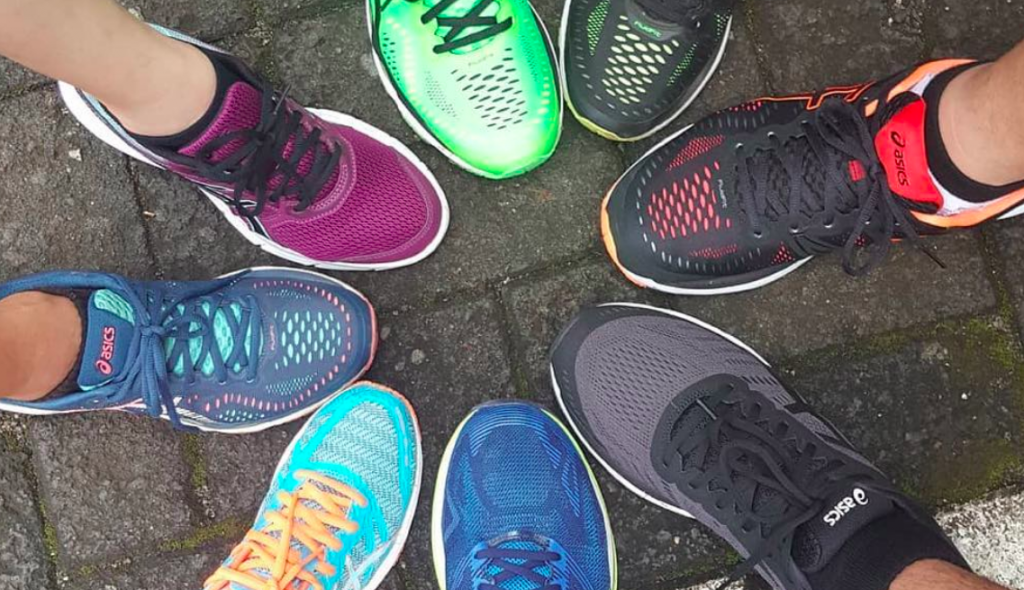Asics reported consolidated net sales increased 0.3 percent to ¥400.2 billion while decreasing 2.0 percent on a currency-neutral basis.
Domestic net sales decreased 0.5 percent to ¥101,072 million, mainly due to weak sales of sportswear, despite steady sales of running shoes. Overseas sales increased 0.5 percent (a decrease of 2.6 percent using the previous fiscal year’s foreign exchange rate) to ¥299,085 million, mainly due to weak sales in the American and European regions, despite strong sales of running shoes and Onitsuka Tiger shoes in the Oceania/Southeast and South Asian regions as well as the East Asian region.
Gross profit increased 3.8 percent to ¥183,259 million, mainly due to an improved cost of sales ratio. Selling, general and administrative expenses increased 8.4 percent to ¥163,688 million due to increased costs in line with the expansion of own retail stores and increased costs related to the rollout of various digital strategies. As a result, operating income decreased 23.2 percent to ¥19,571 million. Ordinary income decreased 7.1 percent to ¥21,738 million due to foreign exchange gains recorded in the fiscal year ended December 31, 2017 compared to foreign exchange losses posted in the corresponding period of the previous fiscal year. Profit attributable to owners of parent decreased 16.7 percent to ¥12,970 million, mainly due to the recording of an extraordinary loss owing to business restructuring in the European region.
Business results by reportable segments were as follows.
① Japanese region
Sales decreased 0.4 percent to ¥119,462 million, due to weak sales of sportswear, despite steady sales of running shoes. Segment income decreased 6.3 percent to ¥5,886 million, due to the effect of the decline in sales, despite an improved cost of sales ratio.
② American region
Sales decreased 6.0 percent (a decrease of 7.7 percent using the previous fiscal year’s foreign exchange rate) to ¥106,177 million, due to weak sales in the U.S. Segment income increased 173.6 percent (an increase of 168.6 percent using the previous fiscal year’s foreign exchange rate) to ¥2,360 million, mainly due to an improved cost of sales ratio, as well as a decrease in provision of allowance for doubtful receivables.
③ European region
Sales decreased 1.2 percent (a decrease of 5.4 percent using the previous fiscal year’s foreign exchange rate) to ¥106,290 million, due to the effect of changes in the retail market and intensifying competition. Segment income decreased 26.6 percent (a decrease of 29.8 percent using the previous fiscal year’s foreign exchange rate) to ¥8,297 million mainly due to the effect of the declined sales.
④ Oceania/Southeast and South Asian regions
Sales increased 15.1 percent (an increase of 9.5 percent using the previous fiscal year’s foreign exchange rate) to ¥27,659 million, due to the strong sales of running shoes and Onitsuka Tiger shoes. Segment income increased 11.7 percent (an increase of 6.4 percent using the previous fiscal year’s foreign exchange rate) to ¥4,056 million.
⑤ East Asian region
Sales increased 13.0 percent (an increase of 10.4 percent using the previous fiscal year’s foreign exchange rate) to ¥49,131 million, due to the continuing strong sales of running shoes and Onitsuka Tiger shoes in China, despite lower sales in South Korea due to restructuring current retail stores. Segment income increased 2.0 percent (an increase of 1.2 percent using the previous fiscal year’s foreign exchange rate) to ¥5,097 million.
⑥ Other business
Sales increased 0.8 percent (a decrease of 1.3 percent using the previous fiscal year’s foreign exchange rate) to ¥9,238 million, due to weak sales of outdoor wear and other items under the HAGLÖFS brand. Segment loss was ¥253 million.
Outlook
For 2018, sales are expected to climb 6.2 percent to ¥425,000 million. Operating income is expected to reach ¥20,000 million, up 2.2 percent; ordinary income, ¥19,500 million, down 10.3 percent; and net profit,¥12,000 million, off 7.5 percent.













